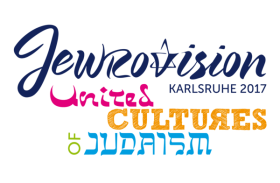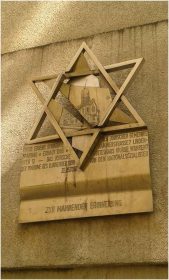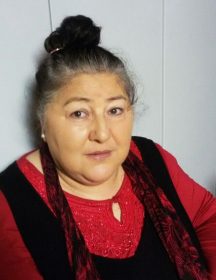 “Jewrovision”, the largest singing and dancing competition for Jewish youth in Europe, will take place this year for the 16th time. Last year an audience of over 2,000 gathered at the Rose Garden Hall in Mannheim, accompanying the brilliant stage show produced by youth centers with frenetic applause. It’s hard to imagine that Jewrovision 2002 was just one of a number of evening programs at a Jewish recreational camp called Machané. Back then, at a recreational center in Bad Sobernheim (not far from Frankfurt), six groups from various cities appeared on a stage just three yards wide. Today, only 15 years later, there are 18 teams presenting their multi-media performances on enormous stages in much larger venues. An extraordinary development. → continue reading
“Jewrovision”, the largest singing and dancing competition for Jewish youth in Europe, will take place this year for the 16th time. Last year an audience of over 2,000 gathered at the Rose Garden Hall in Mannheim, accompanying the brilliant stage show produced by youth centers with frenetic applause. It’s hard to imagine that Jewrovision 2002 was just one of a number of evening programs at a Jewish recreational camp called Machané. Back then, at a recreational center in Bad Sobernheim (not far from Frankfurt), six groups from various cities appeared on a stage just three yards wide. Today, only 15 years later, there are 18 teams presenting their multi-media performances on enormous stages in much larger venues. An extraordinary development. → continue reading
“This four-minute performance means three to four months of training”
Interactive Tracking in Berlin’s Spandau District — Attempt Nr. 1!

Commemorative plaque for the Spandau congregation’s first synagogue, which fell victim to the November 1938 Pogrom; photo: Jewish Museum Berlin
Spandau. Sixteen youths are carefully studying a memorial plaque in a building entryway. Interested young people with iPads in their hands are having an animated discussion on the streets of the old quarter. We’re talking about schoolchildren from the 9th grade at B. Traven Upper School tracing locations of Jewish life. They’re testing our online portal “Topography of Jewish Life in Germany,” which pools information on this subject for the first time and depicts it on an interactive map (our colleague Dana Müller has already reported on it here on the blog).
In the portal, the teenagers can also upload their own writing, photographs, and videos of places they discovered. They’re enthusiastically testing more functions, navigating by means of the digital map through the Jewish parts of Spandau’s historic district, clicking on apartments, reading texts, contemplating pictures, and relentlessly asking questions. Orientation is not an issue for them. So they make a lot of discoveries, for instance that the building that today houses a bank used to be a well-known “Jewish department store,” the Sternberg Department Store. They’re actually getting passers-by involved just by sharing their enthusiasm. At the end they ask us, the museum’s educators and project developers, to offer another such workshop again soon.

Sparkasse Bank in Spandau’s historic district, once the M. K. Sternberg Department Store, and commemorative plaque for Julius Sternberg at the entrance to the Sparkasse Bank; photos: Jewish Museum Berlin
That’s how it was.
Well — that’s how we would have liked it to go the first time we tried out how to combine the online portal successfully with our mobile museum on.tour — The Jewish Museum Berlin Tours Schools (more about on.tour on our website). → continue reading
“Our Father – A Sinti Family Recounts”
Reading with Anita Awosusi
Our series “New German histories” continues this year: on February 9, 2017, (the date was cancelled at short notice!) Anita Awosusi will introduce her book Vater Unser – Eine Sintifamilie erzählt (Our Father – A Sinti Family Recounts) in the W. Michael Blumenthal Academy of the Jewish Museum Berlin. In her book the author weaves together her family’s biography, broader historical events, and the aftermath of Nazi rule. She tells the story of her father and at once of her own evolution. As a civil rights activist she still fights today against discrimination and for equal rights and civic participation for the Sinti and Roma peoples and was active for over twenty years at the documentation and cultural center for German Sinti and Roma. In anticipation of the event we asked Anita Awosusi three questions:
You entitled your book Our Father – A Sinti Family Recounts. Is the play on the central Christian prayer, the “Our Father”, intentional on your part? If so, what did you want to express with this choice?
The title Our Father came about because my sister and I always say “our father” when we talk about our parents. In addition, my father had a very fundamental role in our family as patriarch. Not to suggest at all that our mother was less respected by us children. But there was a second reason: → continue reading
